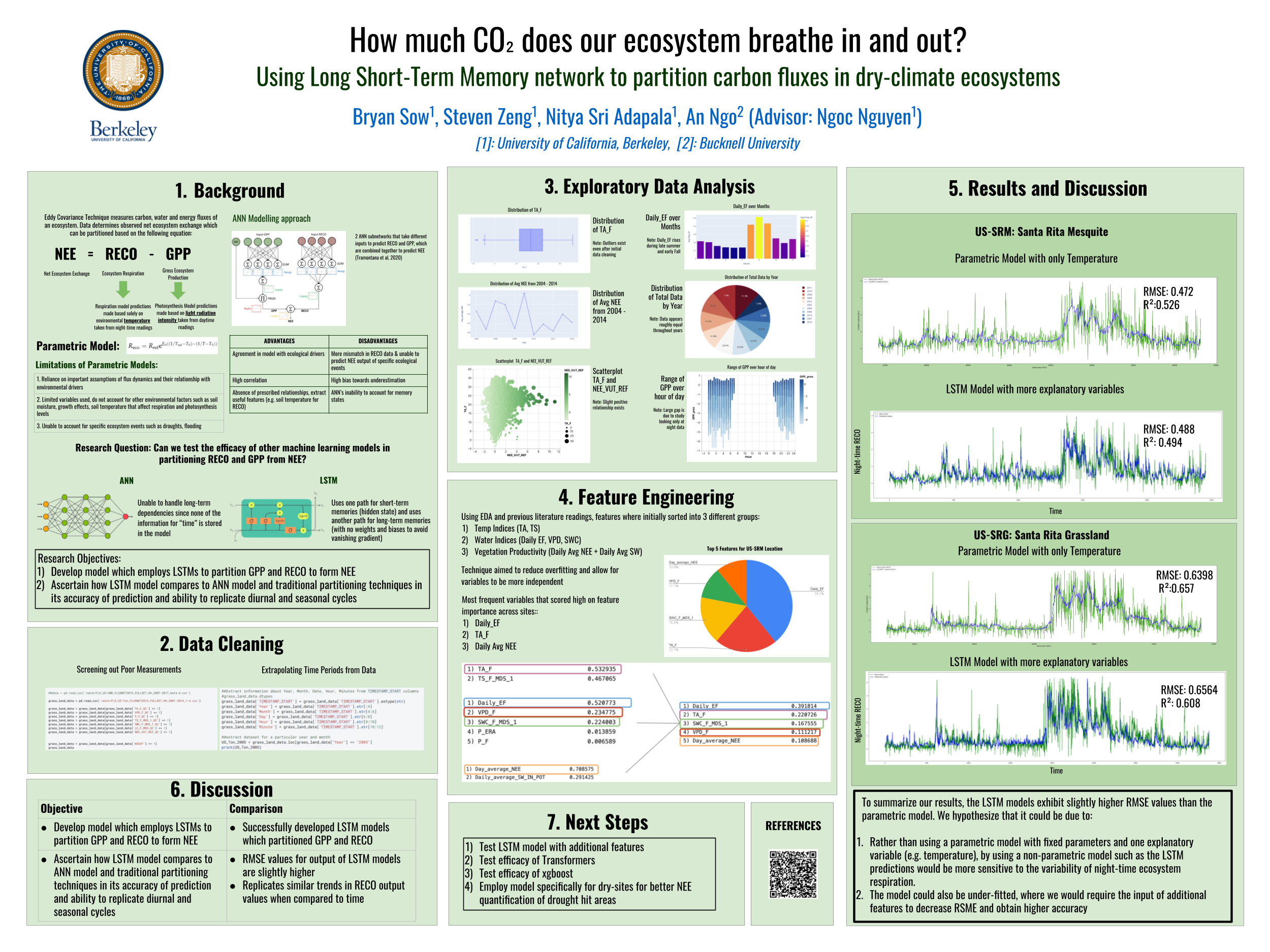Have you ever wanted to solve climate change and learn about the most efficient way to store CO2? While the future of human-made CO2 capture technology is unclear, nature has been the most efficient carbon storage system to date, storing ~30% of anthropogenic emitted CO2 in pools such as vegetation and soils. In this project, we will follow the footprint of CO2 in our ecosystems and quantify how much CO2 is stored and lost through ecosystem processes such as photosynthesis and respiration. As all living cells respire, consume energy, and release carbon, the respiration process has been one of the ecosystem's two largest natural carbon fluxes. Given the timeline of this Data Science Discovery project, we will focus on creating a new parametric model of ecosystem respiration as a function of different environmental variables such as temperature and water availability through the assistance of Clustering methods, Random Forest, and Neural Networks. An eagerness to discover the unknown and solve real-world problems is essential for the enjoyment and success of this project.

